This is an invitation to join a club, or perhaps it’s a cult, that notices grave markers made of zinc. Our enthusiastic group has no name, so you could conjure up something catchy along the lines of Friends of Zinc, or the White Bronze Collective. Unlike birdwatching or tree identification, which require actual knowledge, you can learn to recognize these fascinating zinc objects after being shown only one, or you could just read this post. The rewards are endless.
Zinc markers are not plentiful in Nova Scotia but they are common; any cemetery that was in use at the end of the 19th century is a potential candidate site (most examples are from the 1880s and they peter out by the First World War). The zinc specimens often mimic their stone cousins in size and shape, but are recognizable because of their matte blue grey colour and crisp decoration. Sometimes they will be the “best” looking marker in the cemetery, because zinc resists the growth of lichens and mosses, and environmental staining.

Advocate
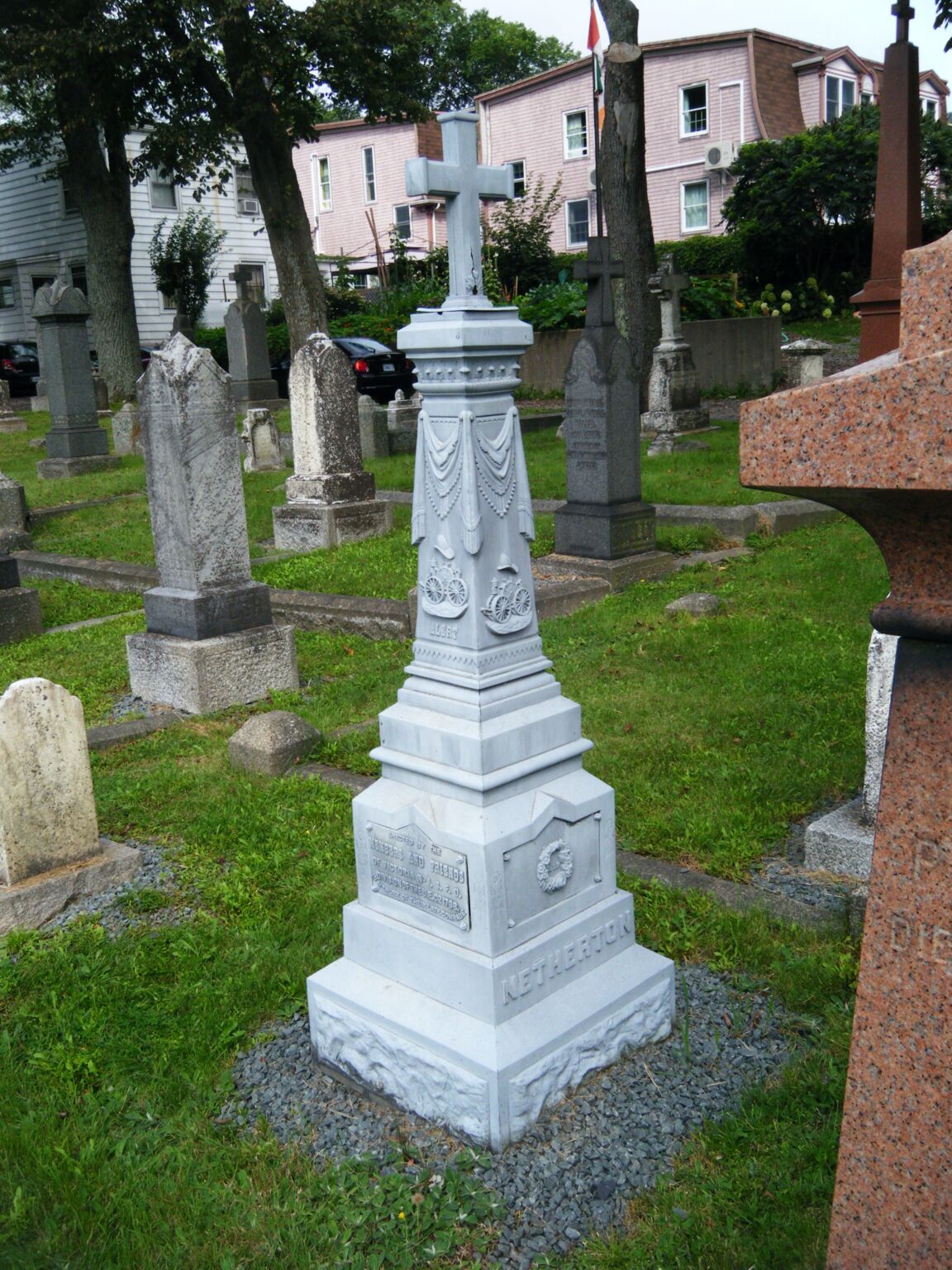
Holy Cross Cemetery, Halifax
Unique Selling Proposition
If zinc memorials imitated those made of stone, why choose the metal one? Highly decorative zinc markers were factory made from existing moulds, so they were less expensive than hand-carved gravestones. Folks chose a design from a catalogue, and many embellishments could be added (sort of like picking an accessory package for your new car). Details of the deceased could be cast into the body of the memorial or on removable panels, allowing new names to be easily added at a later date.
Of course there was nothing local about these zinc products that were made or assembled in Ontario with the major factory in Connecticut. Identical memorials can be found in a big chunk of the continent.
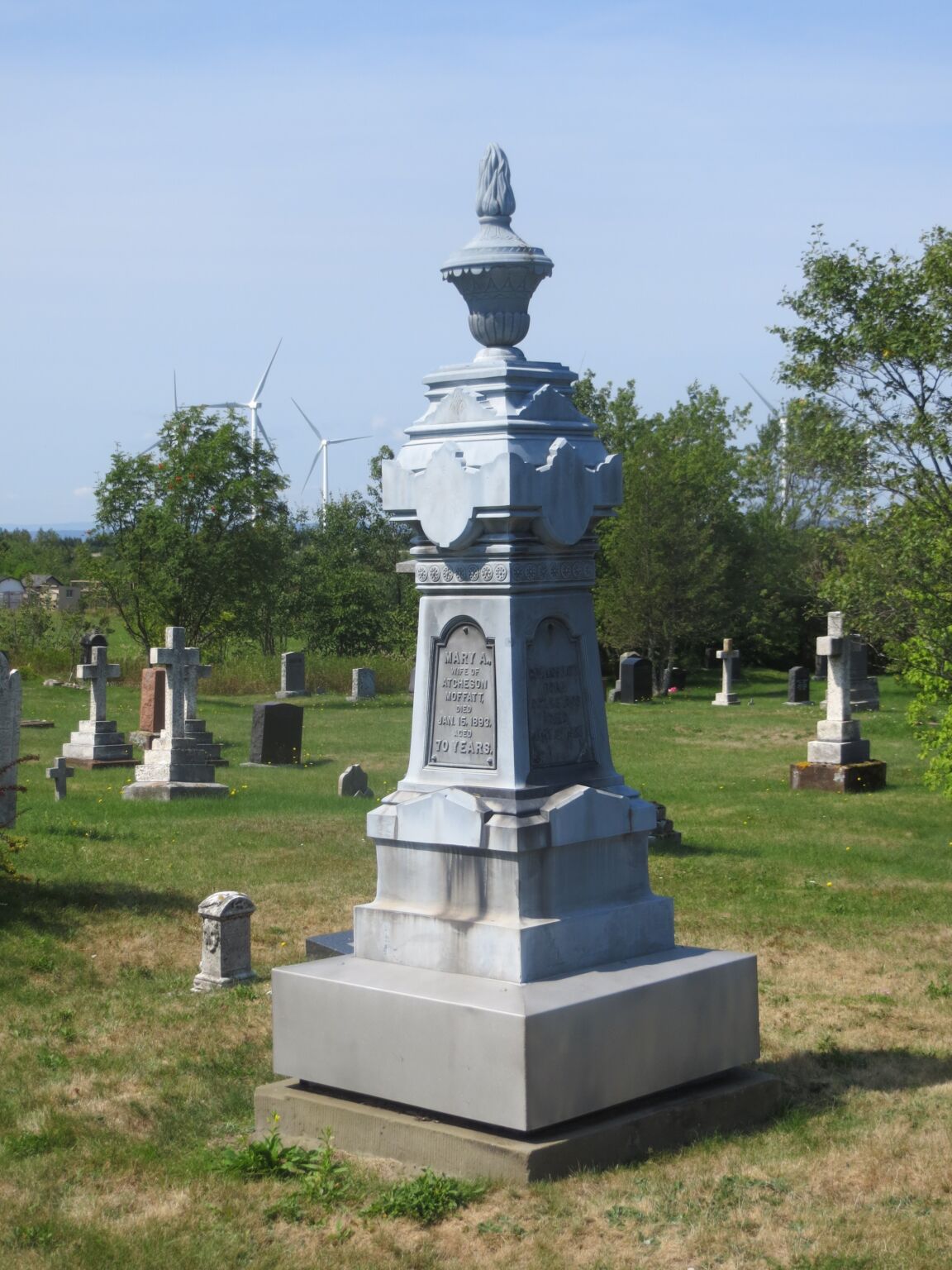
Amherst
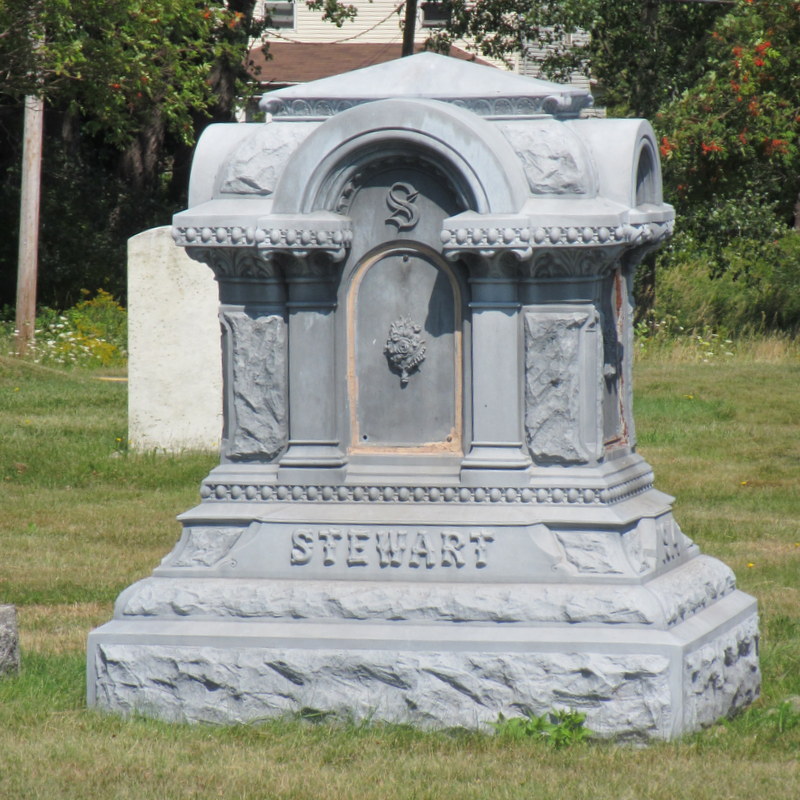
Brookside Cemetery, Sydney Mines
White bronze was a made-up trade name used to market zinc memorials, because bronze was expensive and had a reputation for durability.

Emblems full of meaning
The 1882 catalogue of the Monumental Bronze Company of Bridgeport, Connecticut has several pages of “bas relief emblems” that could be added to your marker without extra cost. Friends of White Bronze will notice these little emotional cues generously applied to markers, sort of the way we sprinkle emojis in our communications. .
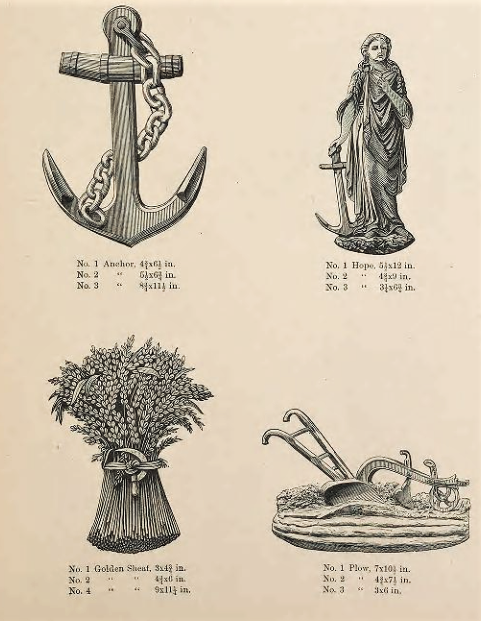
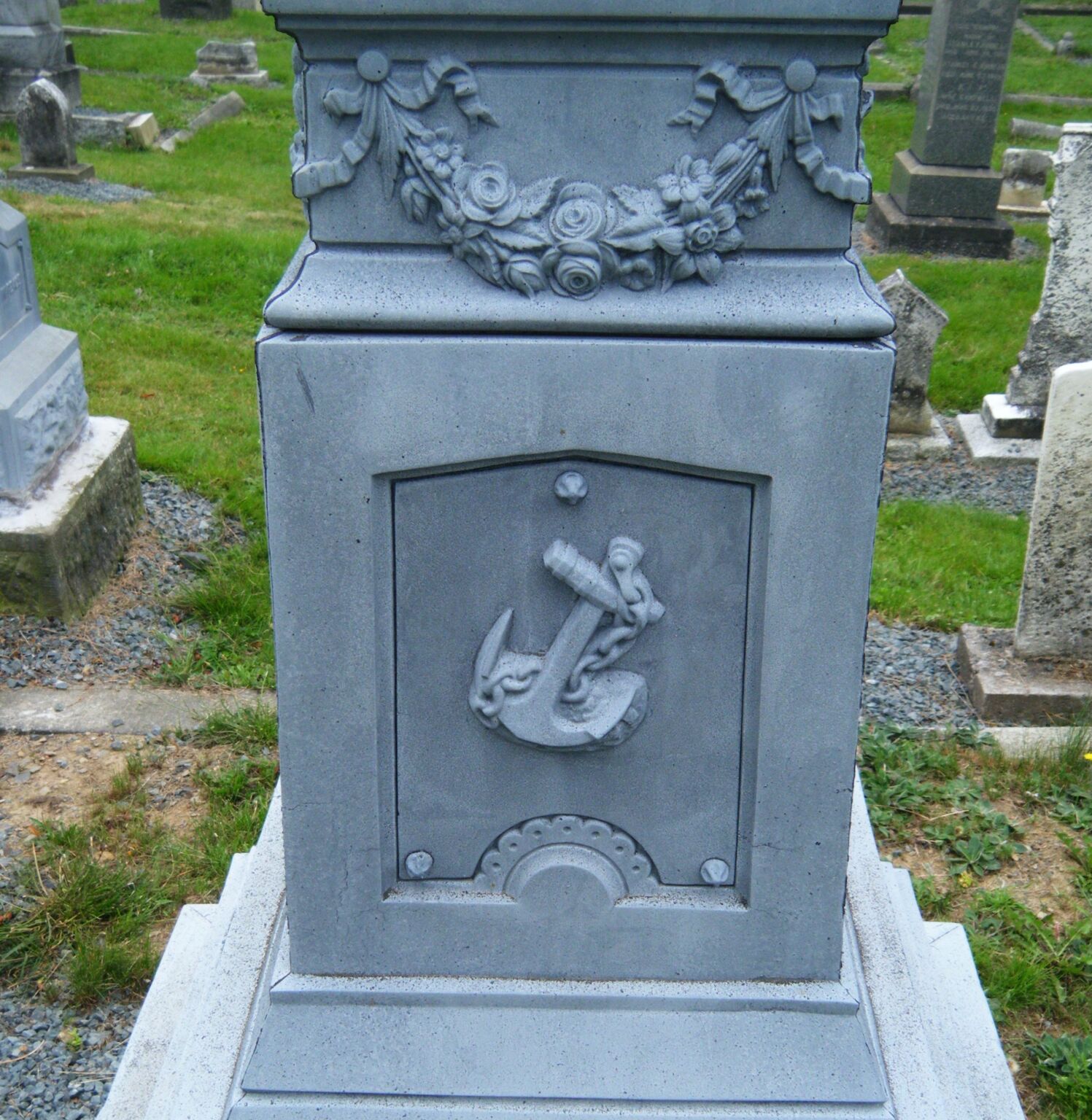
Will your anchor hold in the storms of life
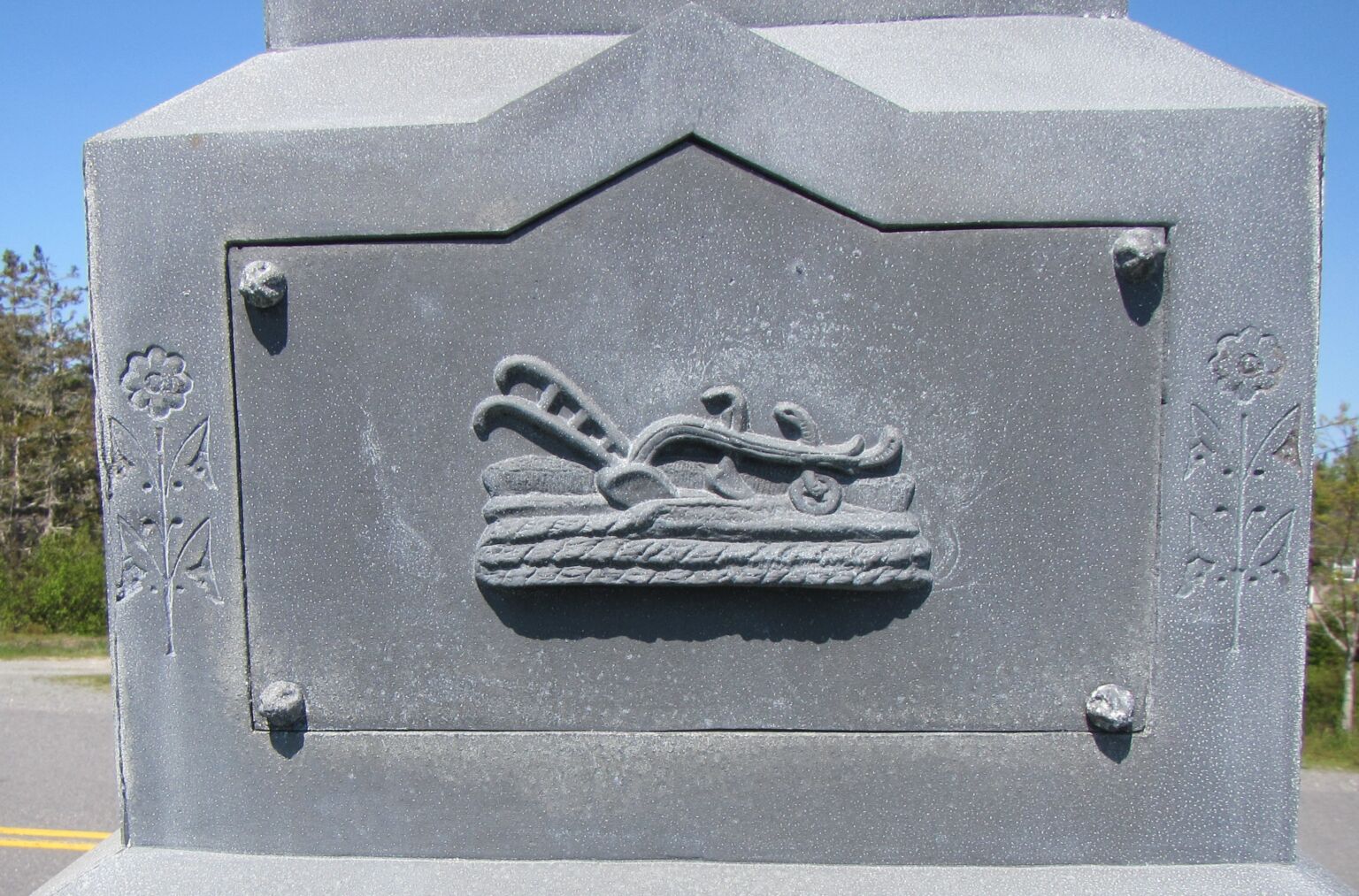
Break up your fallow ground: for it is time to seek the Lord
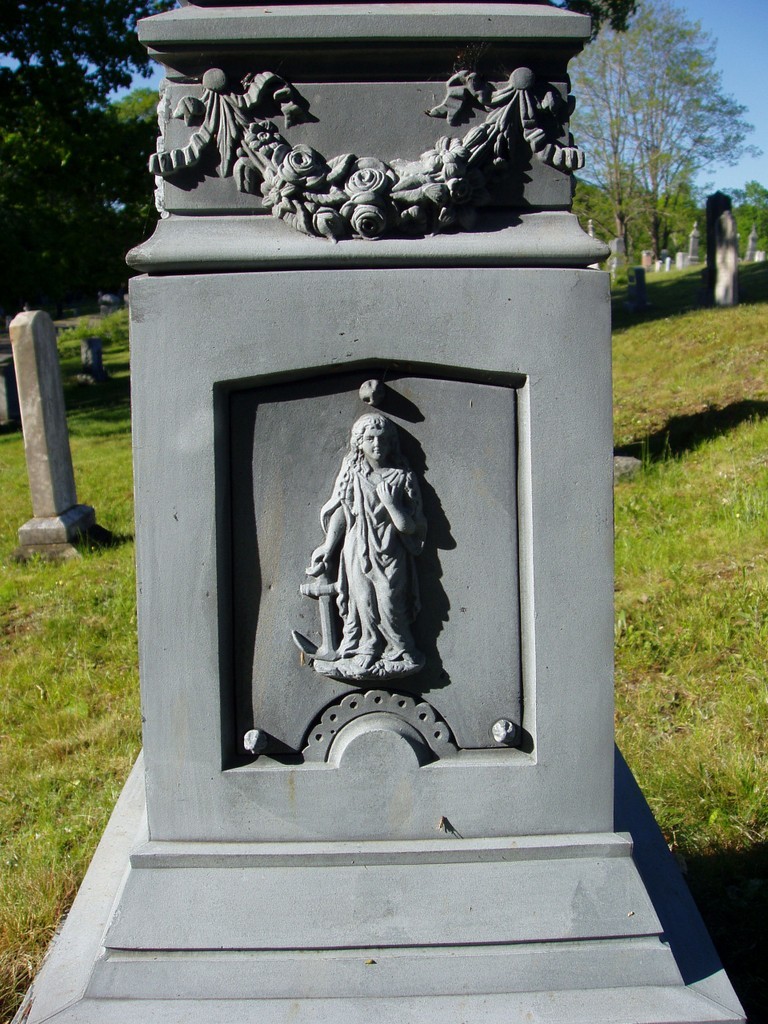
Hope

Faith

Farewell to earthly existence
Type Styles
Many styles of type were available and the letters were all raised, which leads to dramatic shadows. Today this wavy typeface would be appropriate for Halloween products.

This rustic “twig” typeface is a popular one for me to photograph.

Sackville, NB
I read this as “ISSE,” a cute nickname, but now see that it is “1886” which make a lot more sense.

Middleton
The client could select a fancy type for one side and a more severe style on another.

The Ferraris of Zinc
All zinc memorials are decorative, but many are small and tend to blend in with other markers.

A few special designs demand to be noticed. I was totally smitten with this towering obelisk topped with a century plant in an urn (symbolizing eternity).
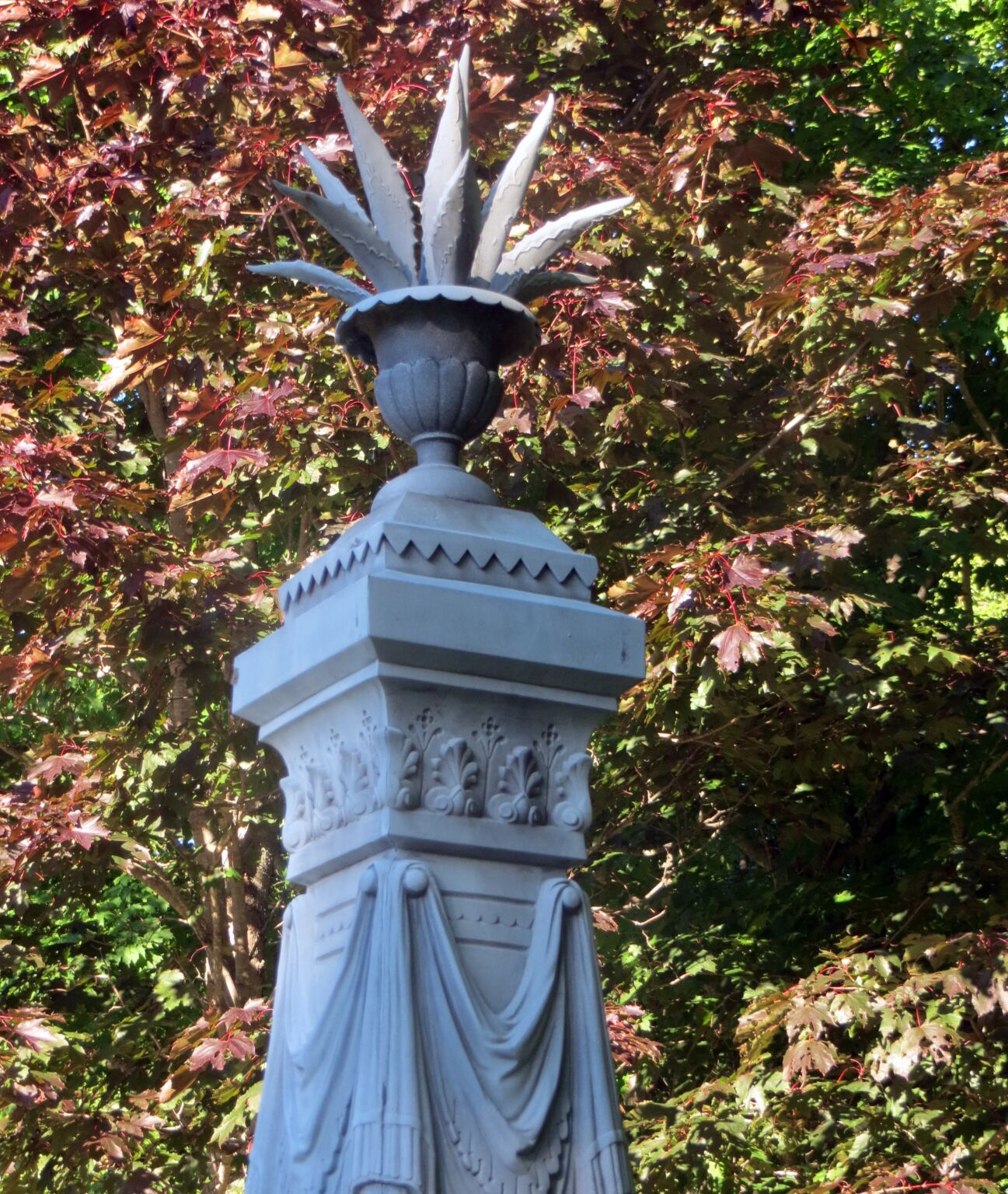
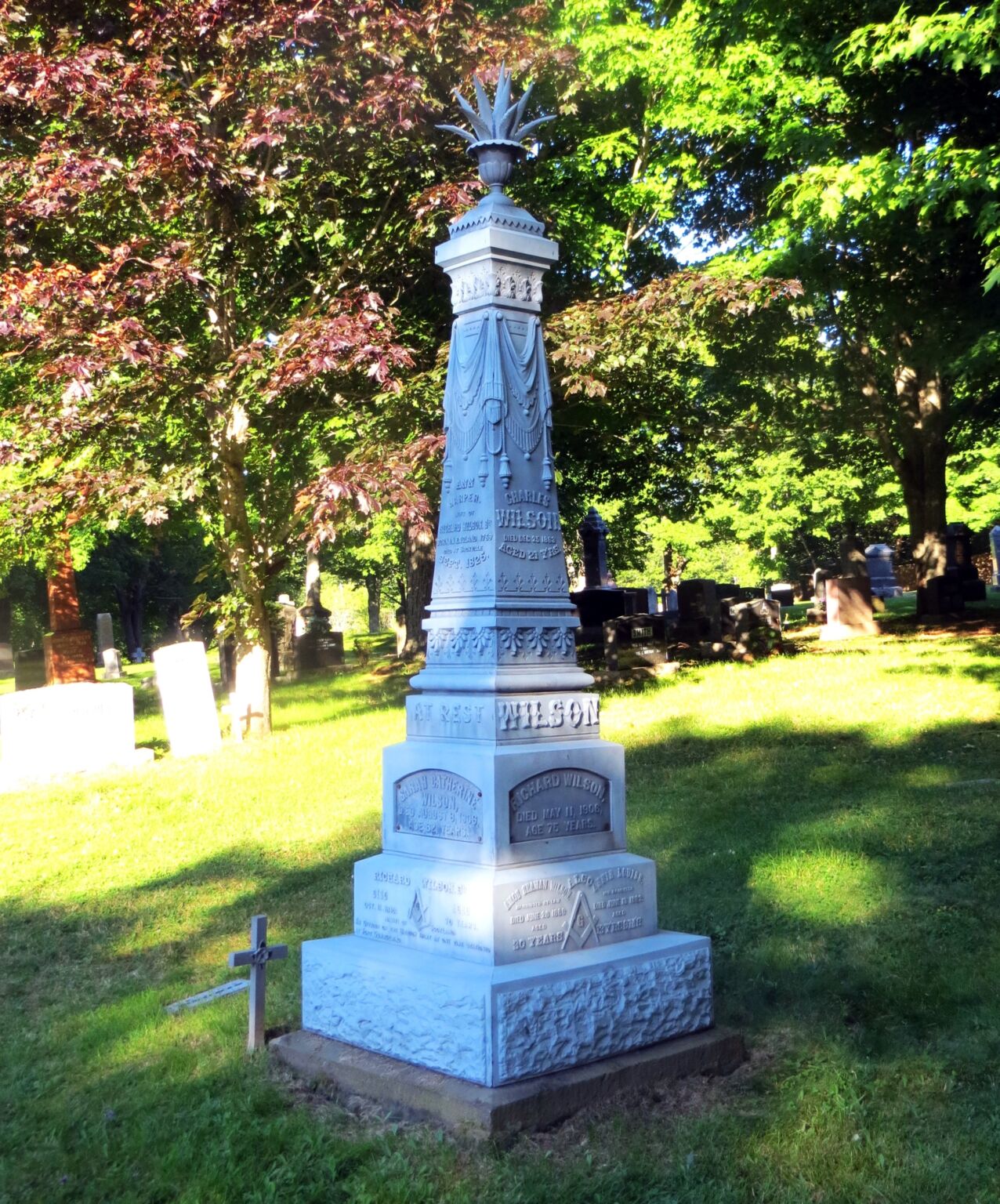
In Camphill Cemetery in Halifax there are two allegorical statues of zinc. Faith holds a bible and raises an arm towards heaven.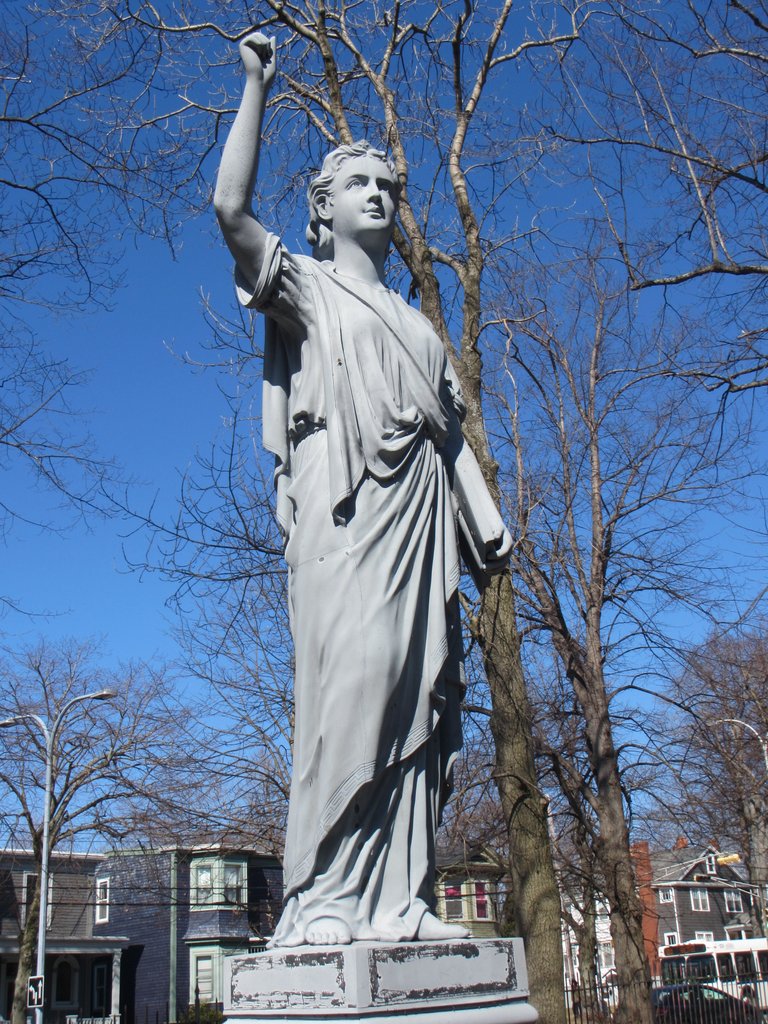

Try to catch a glimpse of Faith as you wait for the lights on Robie Street at Jubilee
Hope grips an anchor, anticipating it will hold fast in the storms of life (and death). A stirring thought and well worth the $125 price listed in the 1882 catalogue of the Monumental Bronze Company. Faith was a larger statue and sold for $300.

Camphill Cemetery, Halifax
Extolling the virtues of zinc memorials, the manufacturer claimed that “age will not impair their beauty.” A remarkably accurate statement, as you can observe, despite the assaults of our particular weather. We see pretty much exactly what our Victorian ancestors saw, except they could read the iconography with more emotion. What a treat.
A gallery of just a few more

Holy Cross Cemetery, Halifax
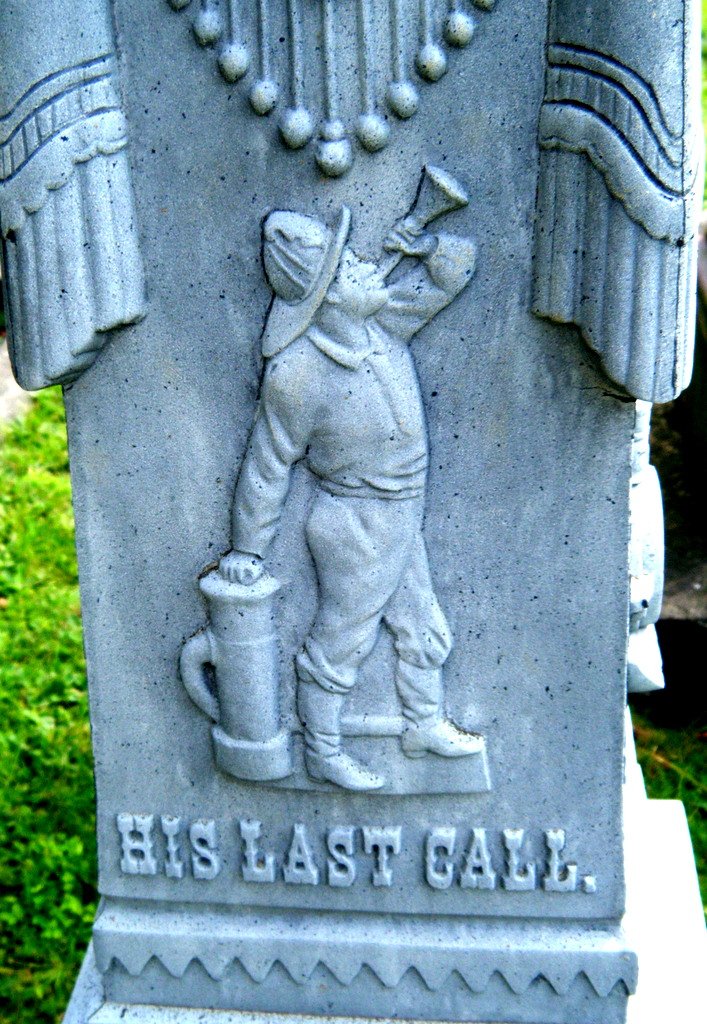
Holy Cross Cemetery, Halifax
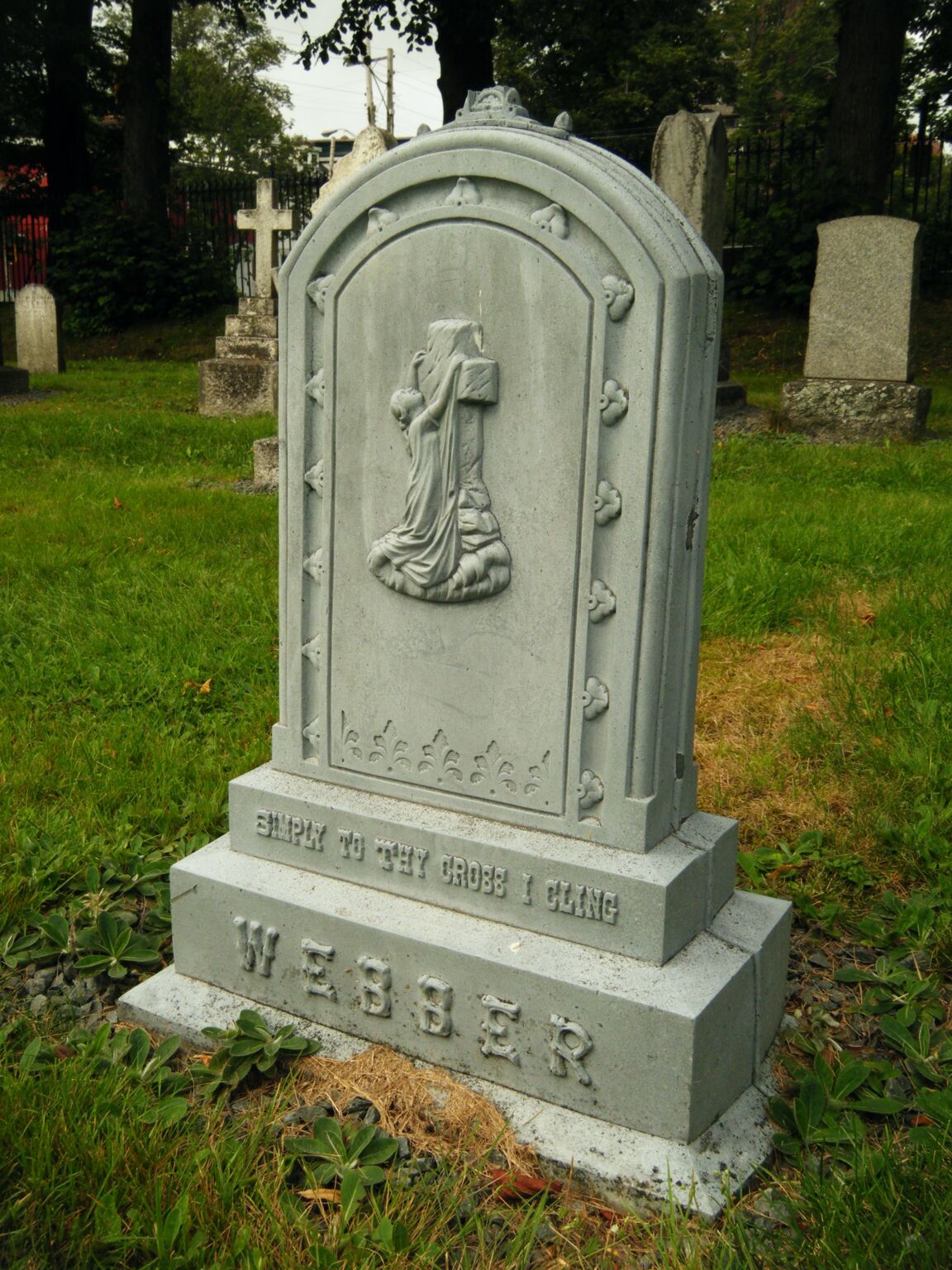
Dartmouth

Camphill Cemetery, Halifax
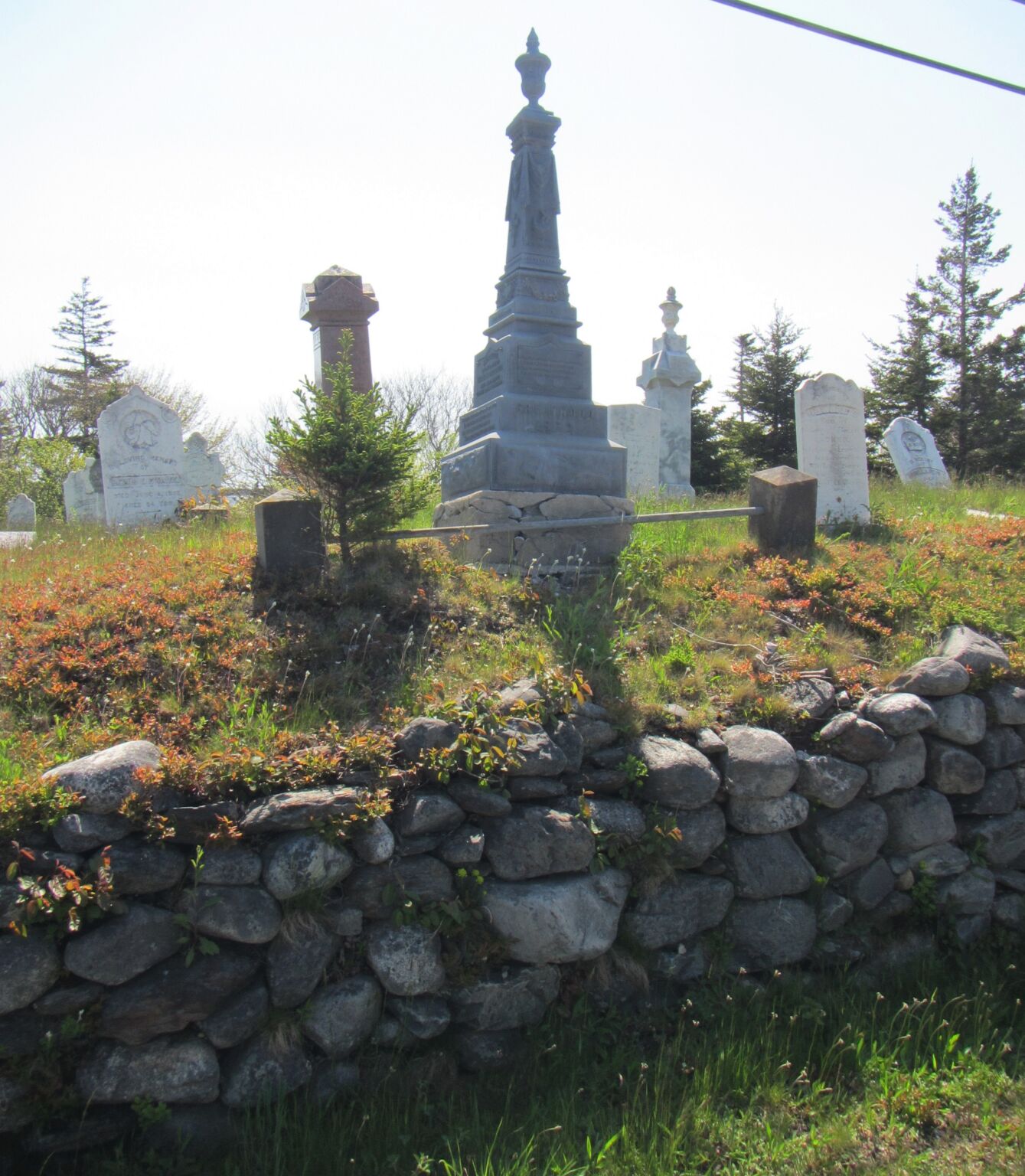
Near Lockeport

Covenanters Church, Grand-Pré






